Missions tracked at Deep Space Station 51 at Hartbeesthoek
Plaques still to be found at HartRAO commemorate some of the spacecraft that were tracked. Images of these are used below to illustrate some of the missions with which DSS 51 was involved.
Rangers to the Moon
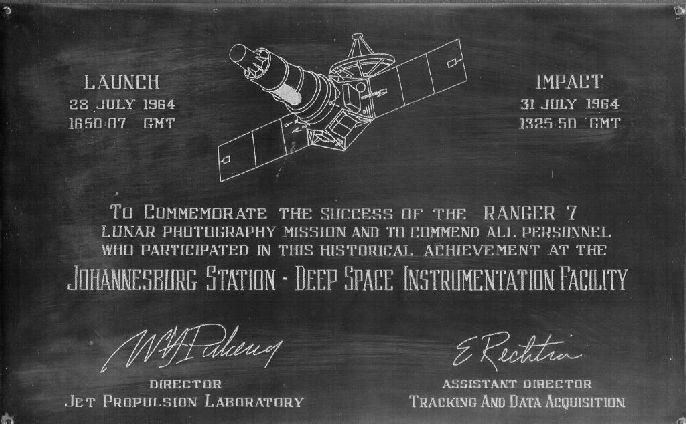
Click on the image for large version
In preparation for landing men on the Moon, several series of unmanned spacecraft were sent to explore it. First were the Rangers, designed simply to take photographs and send them back to Earth. These spacecraft flew straight towards the Moon until they crashed into the surface. Ranger I was the first mission for the NASA Deep Space Stations. Launched on 23 August 1961, it did not get beyond Earth orbit owing to the failure of the Agena second stage.
The first successful mission was Ranger VII, and two more successful missions followed. Ranger VII sent back 4308 photos before it impacted the Moon on 31 July 1964.
Surveyors to the Moon
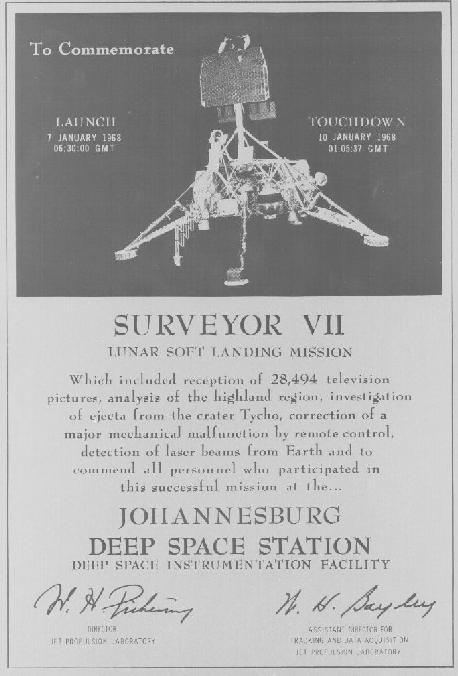
Click on the image for large version
The Surveyor series were much more advanced. They soft-landed on the Moon just like Apollo was to do.
Lunar Orbiters
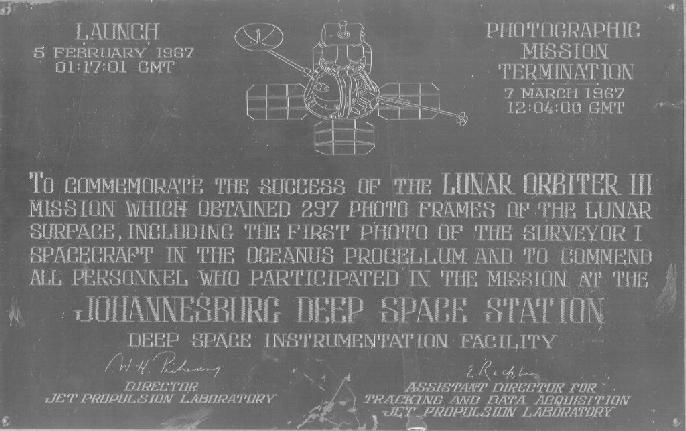
Click on the image for large version
The moon had to be mapped at high resolution to see where the Apollos could land. This was done with the Lunar Orbiter series of spacecraft.
Apollo - Man on the Moon

Click on the image for large version
Finally, after all the careful preparations, the Apollo spacecraft took men to the Moon for the first time.
Mariners to Venus
While Apollo was going on, the rest of the solar system was not neglected.
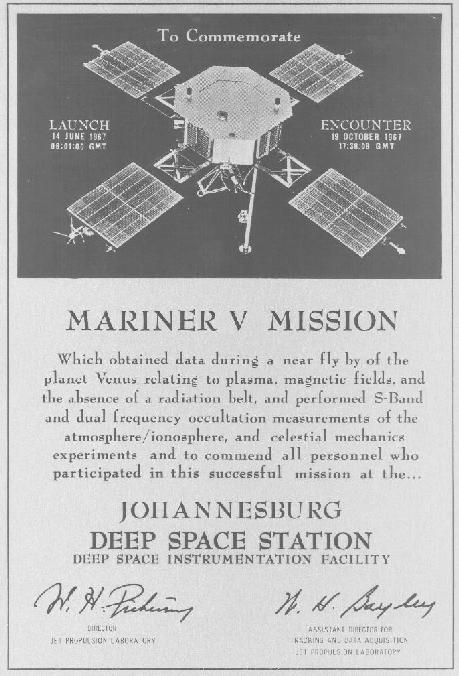
Click on the image for large version
Mariner V was an early spacecraft sent to explore Venus. However, NASA had more luck with their Mars spacecraft than with their probes to Venus, where Soviet spacecraft were more succesful.
Mariners to Mars
Mariner IV obtained the first closeup photographs of Mars in a fly-by during 1965. The NASA Mission Report notes that on July 14: "Mariner-Mars encounter began properly with an event on Earth, not one in space. The Johannesburg DSIF station transmitted a command to turn on the TV scan platform, anticipating by about an hour a similar on-board command from the CC&S (Central Computer and Sequencer). This was the first of eleven ground commands transmitted to the spacecraft during encounter operations."
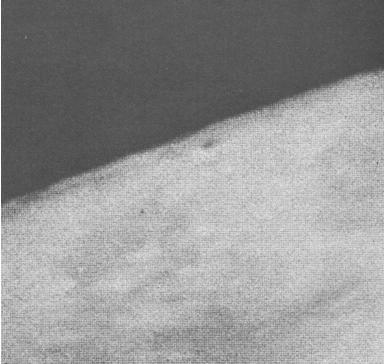
The images obtained by the TV camera were recorded on tape and transmitted back to Earth after the encounter. The very first picture was received here at Hartebeesthoek on July 15 1965, starting at 13:01:58 UT, when Mars was nearly overhead at Johannesburg. This picture is shown below. These pictures were also the first pictures of another planet to be taken by a spacecraft. The data were transmitted back to Earth at a rate of 8.33 bits per second, and the strength of the received signal was 10-19 Watts. The picture above was the very first received from Mars.

Image number 11 from Mariner IV clearly shows that Mars is cratered, and showed no signs of Percival Lowell's "canals".
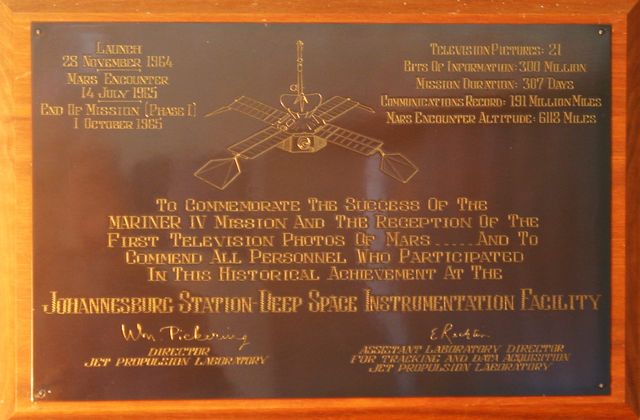
Click on the image for large version
The Mariner IV plaque in the foyer of the Control Building commemorates these first pictures from a spacecraft at Mars.
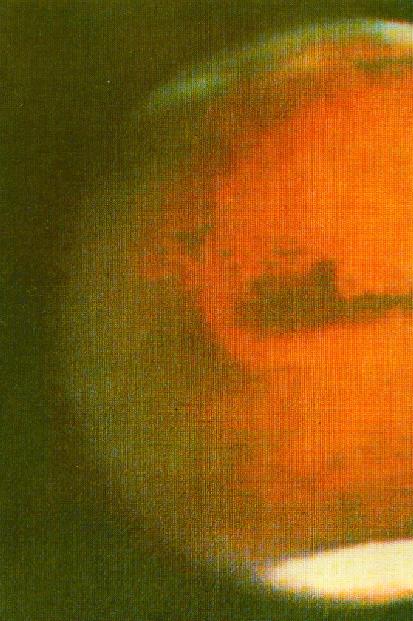
Mariner VI was able to send back colour pictures of Mars.
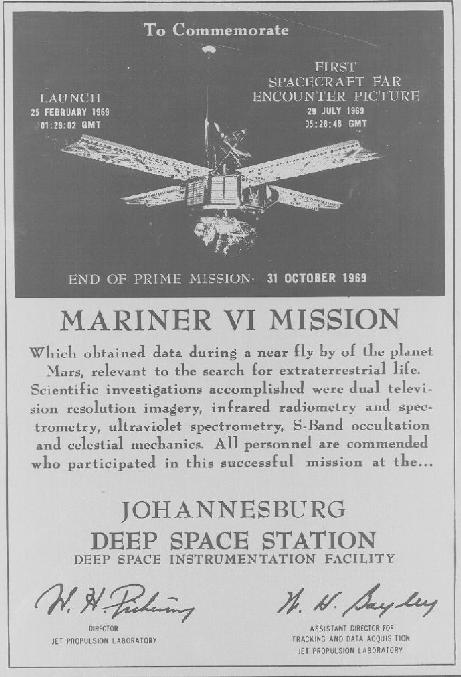
Click on the image for large version
Mariner VI is commemorated in this plaque.
Pioneers Exploring Interplanetary Space

Click on the image for large version
The Pioneer series of spacecraft were designed to investigate conditions in space between the planets.
For more information, see the History of the Deep Space Network at the Jet Propulsion Laboratory.
